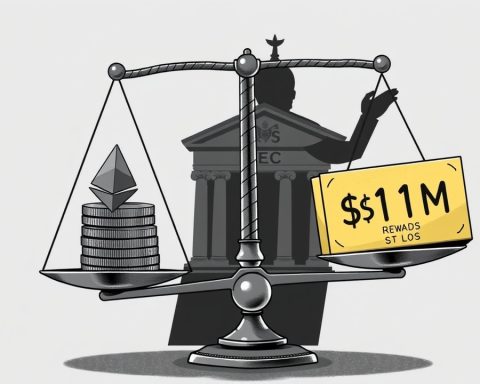The Global Shift in Financial Strategies
The global landscape is witnessing a pivotal shift in financial strategy among nations, propelled by initiatives from leading economies, including the United States. Recently, President Donald Trump enacted an executive directive to create a Strategic Bitcoin Reserve (SBR) and a US Digital Asset Stockpile (DAS), thrusting digital currencies into the forefront of governmental fiscal discussions. This move has inspired countries like Czechia to embark on similar initiatives, seeking to establish their own digital asset reserves.
The Role of DePIN Tokens
However, the dialogue surrounding sovereign digital assets is still incomplete without considering decentralized physical infrastructure network (DePIN) tokens. This innovative framework challenges conventional infrastructure development, allowing communities rather than corporations to create and manage essential facilities, such as telecommunications, in a self-regulating manner while rewarding individual contributors.
By integrating DePIN tokens into its DAS, the US could harness blockchain technology to develop a sustainable economy centered around infrastructure, thereby enhancing its standing as a leader in technological innovation. Such a step would motivate various DePIN projects to expand essential services like WiFi and environmental monitoring, utilizing everyday devices of citizens to share bandwidth. This model not only minimizes capital costs for companies and governments but also fosters community involvement and economic resilience.
A successful implementation of DePIN tokens by the US could inspire other nations to establish their own sovereign crypto reserves, ultimately leading to a global network of token reserves.
This network could streamline infrastructure across territories, reducing operational costs and easing interconnectivity. The DePIN model proposes a reimagined approach to infrastructure creation, moving away from heavy reliance on large corporations and central governments. By employing token-based incentives, communities can effectively share bandwidth and other resources, creating more efficient and cost-effective solutions that could outperform traditional frameworks.
Strategic Goals and Global Implications
Incorporating DePIN tokens into the US DAS could fulfill various strategic goals. For one, it would cultivate a sustainable economy where communities can generate income through their contributions to infrastructure, thereby decreasing dependence on monopolistic entities and mitigating geopolitical vulnerabilities.
Furthermore, DePIN systems are inherently resistant to censorship. The United States has historically led in technology advancements; therefore, adopting DePIN tokens within its sovereign investment strategies would bolster its leadership in the realms of Web3 and blockchain technology.
Many DePIN projects optimize the allocation of resources by aligning infrastructure development with their demand through token incentives, promoting sustainability in emerging sectors like the Internet of Things. In contrast to Bitcoin, which primarily serves as a store of value, DePIN tokens connote ownership and operational involvement in decentralized infrastructure, akin to conventional financial assets such as stocks and bonds.
If various nations were to integrate DePIN tokens into their digital asset reserves, they could potentially devise interconnected infrastructure economies backed by blockchain technology.
This could revolutionize energy distribution, allowing two countries to efficiently manage their fluctuating supplies and demands. Historically, sovereign wealth funds have been established to safeguard national wealth and diversify investments, yet they are increasingly susceptible to inflation. The US, having faced an average inflation rate of 8.0% in 2022, felt the impact across the investment spectrum.
Conversely, DePIN tokens can serve as a buffer against inflation, as their maintenance costs are directly linked to the Consumer Price Index (CPI).
Conclusion: Embracing the Future
As energy costs surged over 20% in 2022 amid supply chain and geopolitical pressures, decentralized energy networks leveraging blockchain can dynamically regulate incentives for energy production. The potential compounded returns of investments in DePIN, derived from CPI increases alongside token issuance, could counteract adverse market conditions.
Incorporating DePIN tokens in a national wealth portfolio exposes the US to advanced economic models built on transparency and community involvement. Nations that have historically championed technological advancements should leap at the opportunity to engage with DePIN, reinforcing their status as leaders in innovation.
The integration of DePIN tokens into the digital asset stockpile is not merely a financial choice—it is a critical strategic necessity. As the global economy transitions towards decentralized models, tech-savvy nations must position themselves for leadership in the impending wave of innovation. Embracing this shift early will allow countries to advantageously establish themselves in the next frontier of economic development.
A decentralized infrastructure model, fostering extensive participation at local levels, would likely stimulate innovation while alleviating R&D costs for the government, allowing for re-allocation of funds to vital areas. Investing in DePIN not only aids in maintaining affordable national infrastructure but also safeguards against funding necessitating massive tax hikes, thereby promoting a future where physical assets are sustainably managed.
If US lawmakers act decisively, they can ensure America’s leadership in the impending infrastructure evolution that champions decentralized ownership.
This commentary is intended for informational purposes only and should not be construed as legal or financial advice. The views expressed are solely those of the author and do not reflect the positions of Cointelegraph.

















